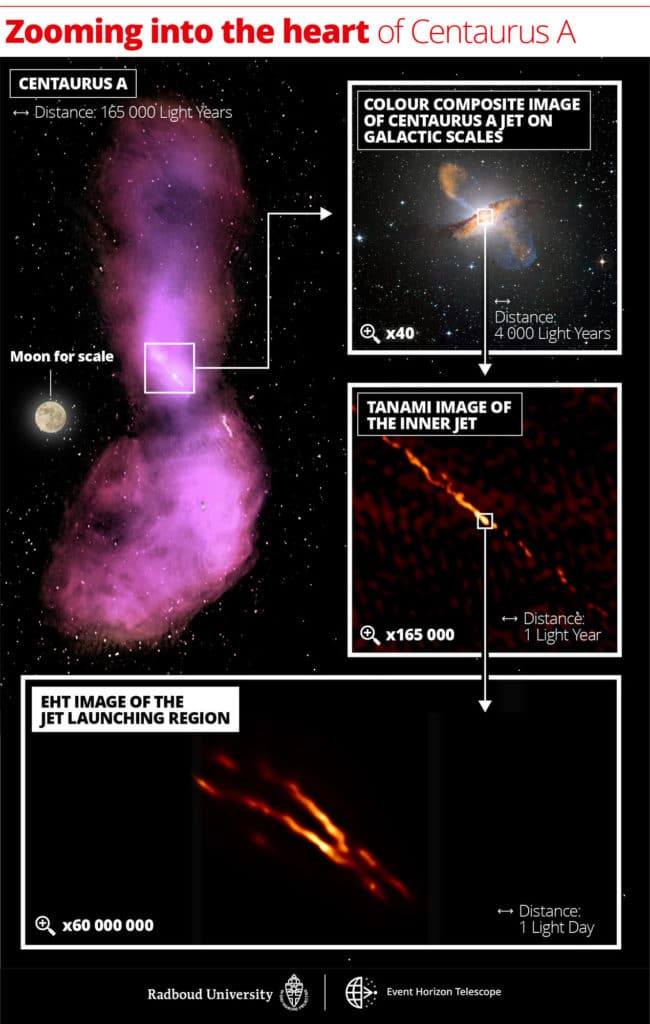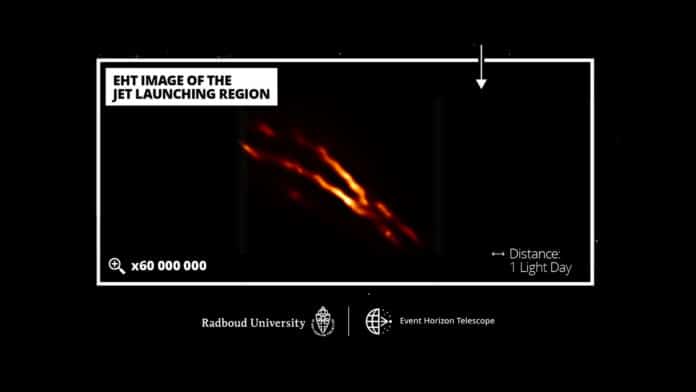Centaurus A is the nearest radio galaxy that lies about 12 million light-years away in the southern constellation of Centaurus (The Centaur). There lies a black hole at the center of the galaxy with a mass of 55 million suns.
In 2019, EHT released the first picture of the black hole at the center of galaxy M87. Now, the Horizon telescope has imaged the heart of radio galaxy Centaurus A in unprecedented detail.
A new study by an international team anchored by the Event Horizon Telescope (EHT) Collaboration has gathered data from 2017 EHT observations. The data allowed the team to see and study an extragalactic radio jet from the black hole. Astronomers also pinpointed the location of the central supermassive black hole and revealed how a black hole jet is being born.
The EHT collaboration used Very Long Baseline Interferometry (VLBI)- the same technique used for the first black hole image- to observe the Centaurus A galaxy at unprecedentedly sharp resolution at a wavelength of 1.3 mm.
The new image shows that the jet launched by Centaurus A is brighter at the edges compared to the center. This phenomenon is known from other jets but has never been seen so pronounced before.
Black holes in the galaxies such as Centaurus A feed off the gas and dust attracted by their enormous gravitational pull. During this process, an enormous amount of energy is released that makes the galaxy ‘active.’
Most matter lying close to the edge of the black hole falls in. However, some of the surrounding particles escape moments before capture and are blown far out into space: Jets – one of the most mysterious and energetic features of galaxies – are born.

Until now, astronomers have used several models to understand the process better, yet they still have not found how jets are launched from its central region and how they can extend over scales that are larger than their host galaxies without dispersing out.
Matthias Kadler, TANAMI leader and professor for astrophysics at the University of Würzburg in Germany, said, “Now we can rule out theoretical jet models that are unable to reproduce this edge-brightening. It’s a striking feature that will help us better understand jets produced by black holes.”
The observation revealed that the likely location of the black hole at the launching point of the jet. Based on the observations, astronomers predict that future observations at an even shorter wavelength and higher resolution would photograph the central black hole of Centaurus A.
Journal Reference:
- Event Horizon Telescope observations of the jet launching and collimation zone in Centaurus A, by M. Janssen, H. Falcke, M. Kadler, E. Ros, M. Wielgus et al. (EHT Collaboration), Nature Astronomy, DOI: 10.1038/s41550-021-01417-w
